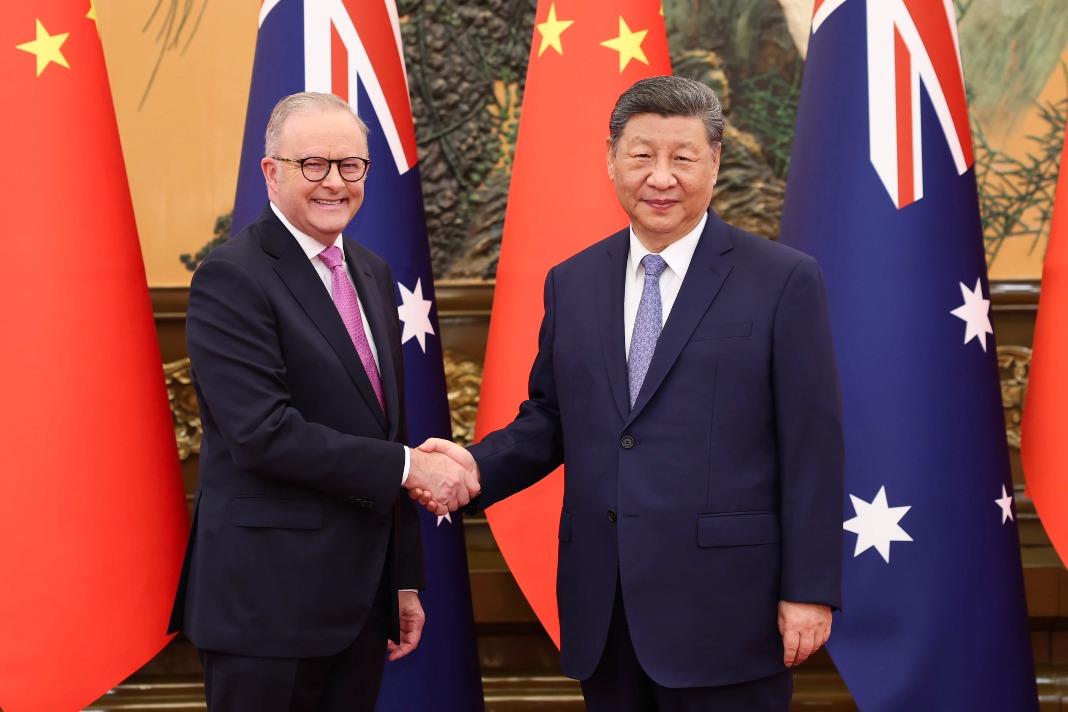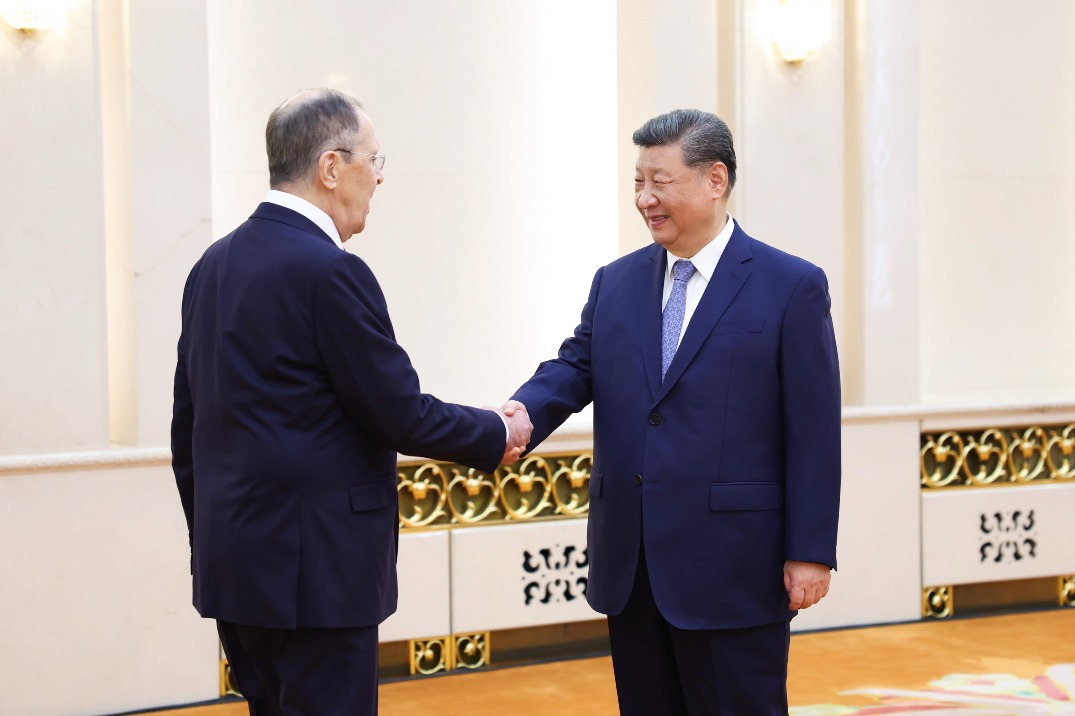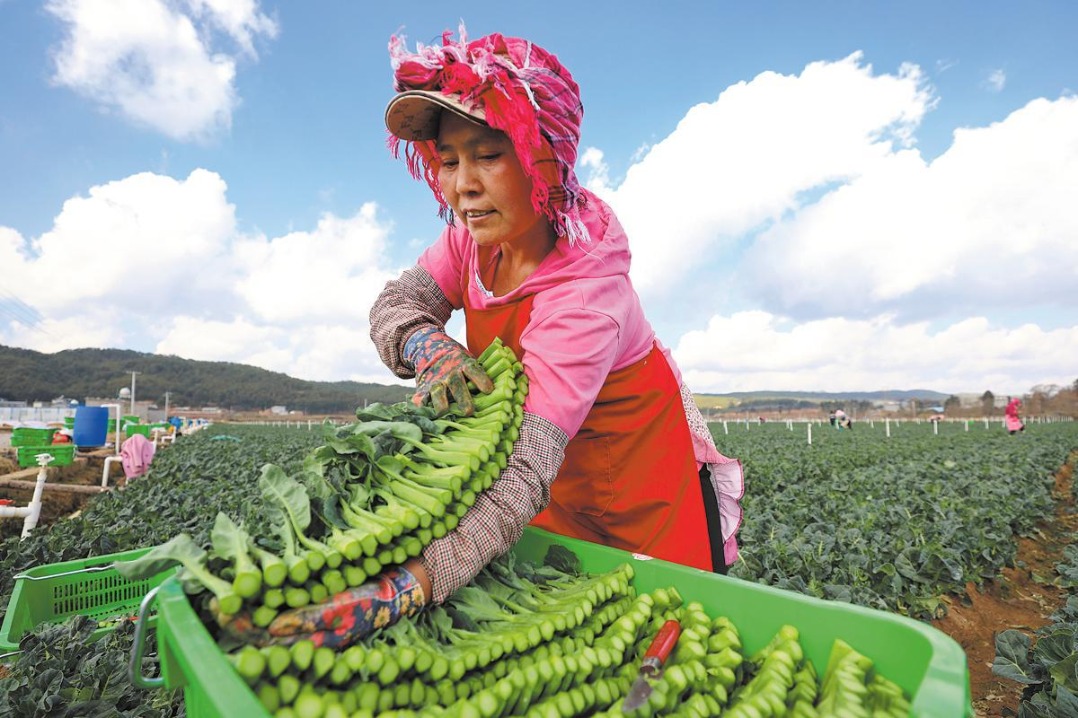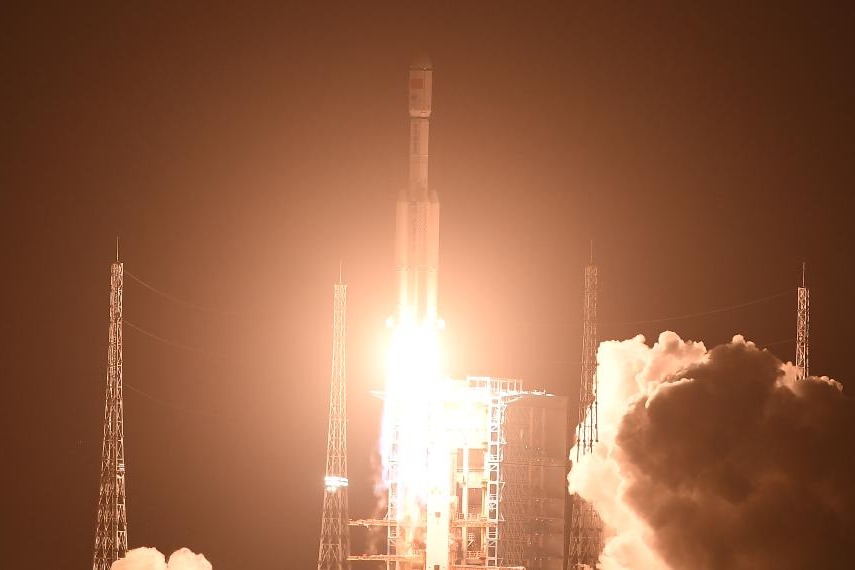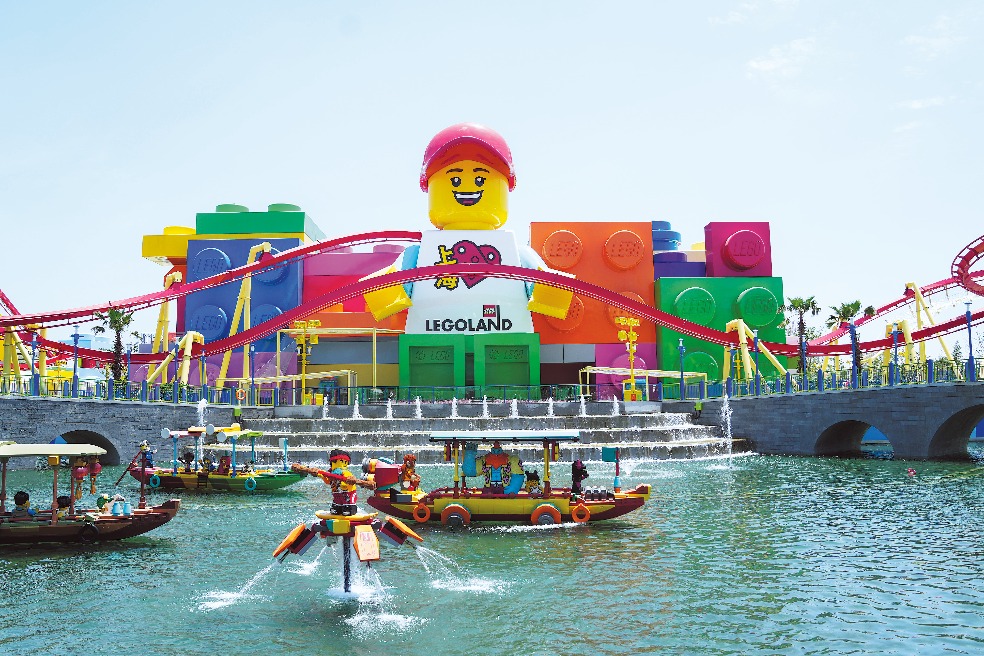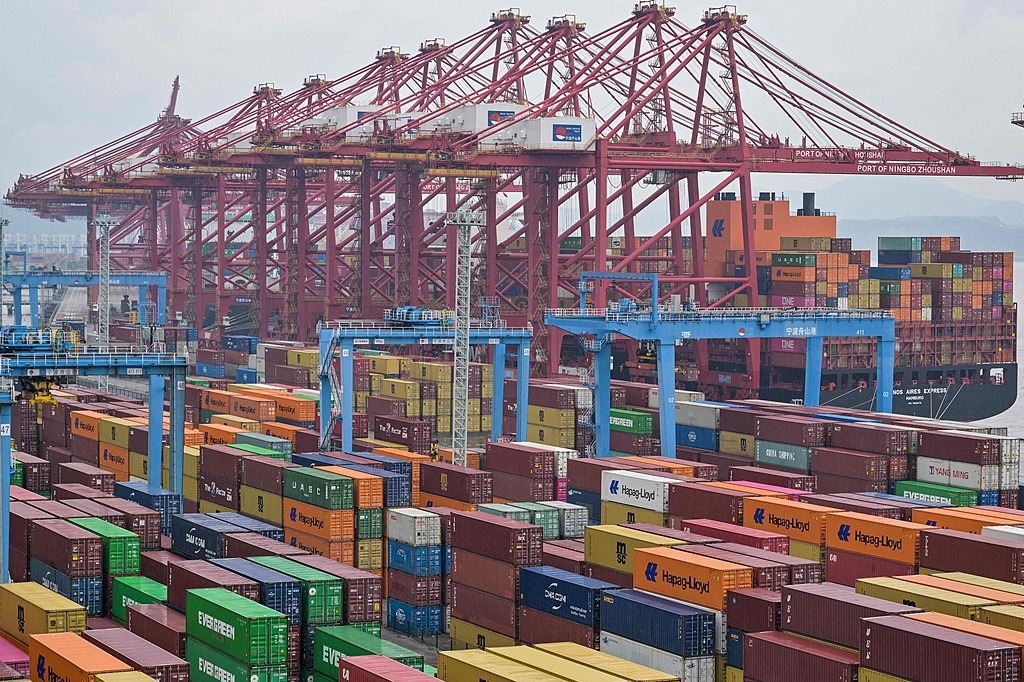Visitors 'surge forward' to Yellow River art exhibition

Among the first visitors to Surging Forward, a Yellow River-themed exhibition that opened at the National Art Museum of China on Aug 13, was Huang Jincheng, a 75-year-old painter, who stood in front of an ink-water landscape titled Longmen, Yellow River, quite excited.
The painting, which Huang made in 1989, depicts a grand view of the Yellow River roaring down through Longmen, a narrow gorge at the border of Shanxi and Shaanxi provinces. It was on show at Huang's solo exhibition at the NAMOC in 2004, and he donated it to the museum.
"I haven't seen the painting for quite a long time. I missed it so much," Huang said during the visit. "I'm touched that it has been conserved by the museum. It's an honor that it is on display at such an important exhibition."
Hailed as the "mother river of the Chinese nation", the Yellow River cultivated along its banks the country's earliest cultures. It is visualized in artworks as a symbol of force, self-improvement, inclusiveness and perseverance. In difficult times, artists have visited the motifs of the Yellow River to encourage people to hope for a better future.
Surging Forward, running through Sept 22, shows more than 100 works in NAMOC's collection that celebrate natural wonders along the Yellow River and the river's "spiritual embodiment of realizing national rejuvenation".
The smallest painting is a print of 8.5 by 12.9 centimeters in which late artist Gu Yuan depicted a landscape of the Baota Hill in Yan'an, the revolutionary base in Shaanxi province, in 1943.
The largest painting on canvas is The Yellow River Cantata: Displacement, Revolt and Struggle, a triptych over 11 meters in length. Its creators, Zhan Jianjun and Ye Nan, were inspired by Xian Xinghai and his best-known work, The Yellow River Cantata, composed in the late 1930s to motivate people in the War of Resistance Against Japanese Aggression (1931-45).
Standing by the triptych is a full-body sculpture of Nie Er, the modern composer best known for March of the Volunteers, the national anthem of the People's Republic of China.
Wu Weishan, NAMOC director who created the sculpture in 2009, says the statue shows the composer standing upright against strong winds, and it symbolizes an unyielding spirit, echoing with The Yellow River Cantata: Displacement, Revolt and Struggle.
The grandeur of the Yellow River is praised in ancient poems, such as those by Li Bai of the Tang Dynasty (618-907).
Wu says modern composers like Xian and Nie carried forward this tradition by "imparting the spirit of the Yellow River into the most powerful musical compositions of their time, creating loud and deep sounds in the heart of their people, who, at that moment, needed the encouragement to strive for national independence".
The river also has a history of flooding. The exhibition shows works that document the efforts taken to regulate its waterways and restore the ecological environment on the riverbanks.


Today's Top News
- Urban renewal beyond economic growth
- Xi meets Russian FM in Beijing
- Xi meets heads of foreign delegations attending SCO council of foreign ministers meeting
- Xi addresses Central Urban Work Conference, listing priorities for urban development
- China reports 5.3% GDP growth in H1
- China handles 95 billion parcels in first half of year
















